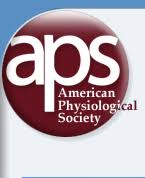Boyle JT, Altschuler SM, Nixon TE,Pack AI, Cohen S
Am J Physiol. 1987 Sep;253(3 Pt 1):G315-22.
The responses of the lower esophageal sphincter (LES), stomach, and diaphragm and their contribution to changes in the high-pressure zone (HPZ) at the gastroesophageal junction were determined during extrinsic abdominal compression or intragastric balloon distension in anesthetized cats. Abdominal compression consistently induced an increase in intraluminal end-expiratory LES and gastric pressure (P less than 0.01). Changes in LES pressure significantly exceeded the changes in gastric pressure (P less than 0.01). In contrast, the LES response during gastric distension was variable in the group of animals despite a consistent volume-dependent increase in gastric pressure. Mean LES pressure for the group was unchanged, although 33% of individual animals exhibited a decrease in LES pressure during gastric distension. Both abdominal stimuli induced sustained inhibition of crural (P less than 0.01), but not costal, diaphragmatic electromyographic activity. Vagotomy affected the LES but not the gastric or diaphragmatic responses to both stimuli. In the group of animals, the combined effect of the changes in the three measured variables on the HPZ resulted in maintenance of the antireflux barrier during abdominal compression but a significant decrease in the barrier during gastric distension.
Link to abstract on PubMed: Boyle JT, et al; Am J Physiol. 1987 Sep;253(3 Pt 1):G315-22.


